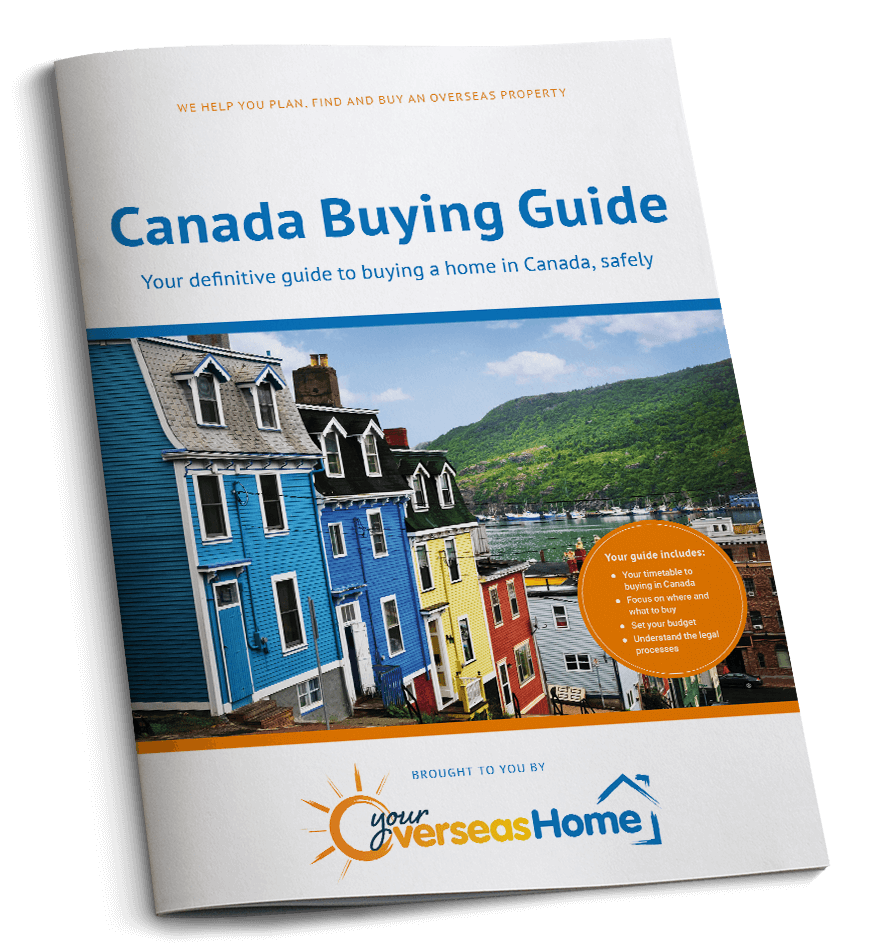Canada has tweaked its recent rules prohibiting foreign investors and those without permanent residency buying real estate there. It means that new-arrivals from abroad with work permits – so anyone serious about starting a new life in the country – can now own a home there. If you have plans to move over, here’s an overview of the types of property in Canada that await you!
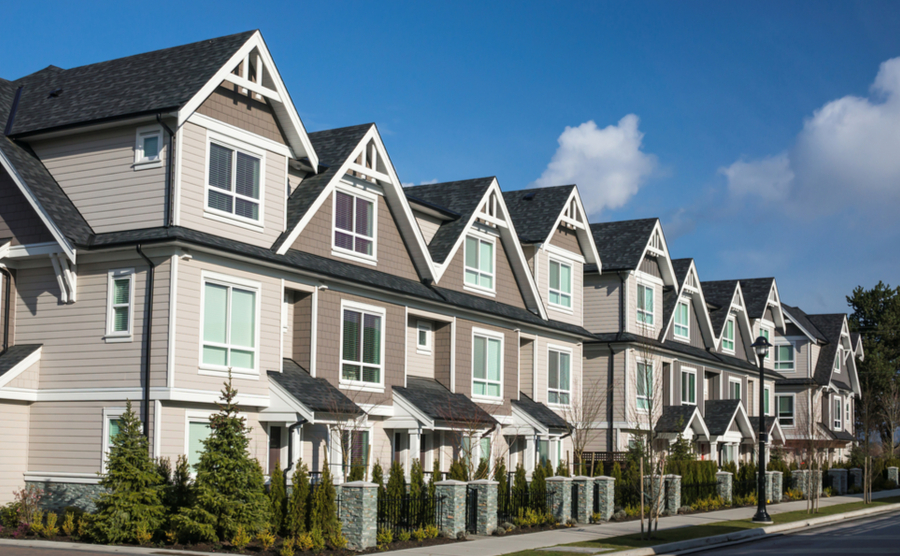
New townhouses in Richmond, British Columbia
Condominium
A popular type of property in Canada is a condominium – essentially what we think of as an apartment or flat in the UK. A condominium is part of a multi-unit property and is sometimes known as a ‘strata’ property. It could occupy all or part of one or more floors in a high-rise block but equally it could be a townhouse or section of a house. It’s a popular and affordable option in Canadian cities and urban areas. Many condo blocks include a communal lobby, gym and even pool. Condo townhouses will usually have communal gardens too.
The ownership and running costs of common areas and facilities in a condo community are shared equally between each condo and managed through a board. Each condo owner contributes via a monthly fee and there are rules governed by the board – always check these things before buying. Meanwhile, the term ‘apartment’ in terms of property in Canada describes a unit available for rentals, either long lets or vacation purposes, and are typically one of many owned by large companies or corporations.
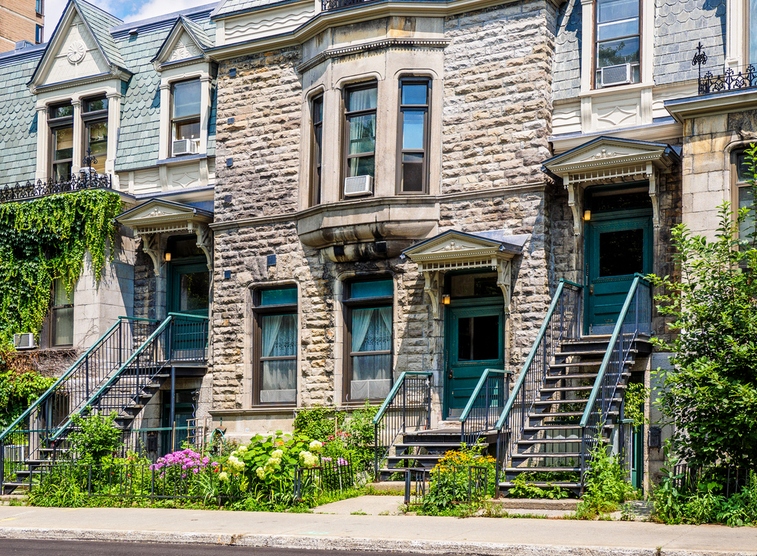
A brownstone in Montreal
Townhouse, row house or brownstone!?
Despite being used interchangeably, there is in fact a difference between a townhouse and row house in Canada. A townhouse is a general term for any type of house attached to another house or building on one or both sides. The style, width and height of each adjoining property is not important and they can be multi-dwelling (known as stacked townhouses!). More specific in format, row houses are built as a series of wall-to-wall single-family homes, typically built in a continuous row, with two storeys and a uniform or similar design – what we would call terraced in the UK.
Meanwhile, in large cities such as Ontario, Toronto and Calgary, you will also come across the term ‘brownstone’ (even more prevalent in the US). This describes a period townhouse clad in sandstone and with distinct features. Built towards the end of the 19th and early 20th Centuries, these have a historic charm, lots of space and today usually demand a premium.
Interested in buying property in Canada? Have you read our free guide?
Plexes!
Plexes are another quirky type of property in Canada that adopt urban design features in order to save space. Plexes are extremely popular in Canadian cities, in particular Montreal. But, what are plexes? They’re buildings split into two (duplex), three (triplex) or four (fourplex) individual dwellings, each being over one or more storeys and having its own independent access.
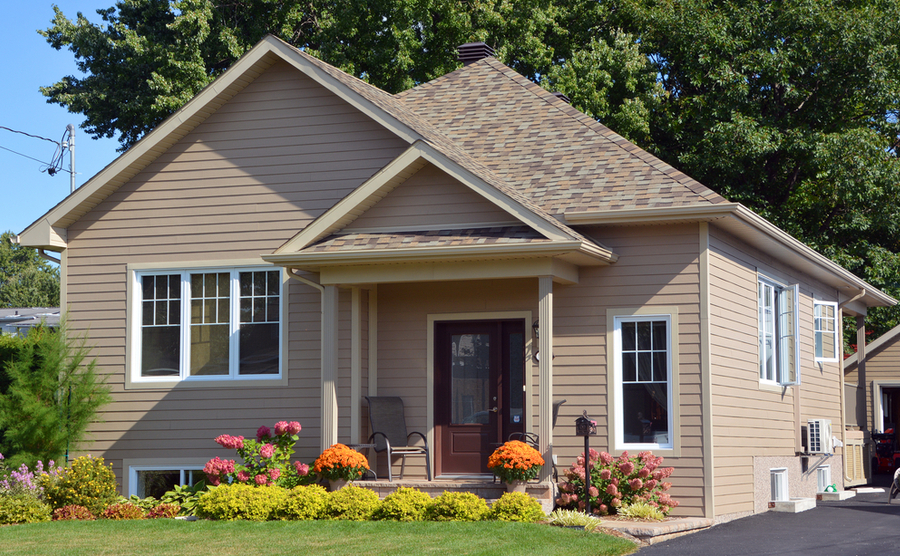
70s-style bungalow in Quebec, Canada I Image: meunierd via Shutterstock
Bungalows and split-level houses
Single-family homes, or what we call detached properties, come in different shapes and sizes and make up 50 per cent of Canada’s property market. Two of the most common types of property in Canada, particularly in rural areas of the country, are bungalow and split-level homes. Bungalows are usually more affordable than larger detached homes and typically come with a large plot. A variation on this is the ranch bungalow, usually seen on a farm and suited to outdoorsy lifestyles.
Split-level homes are a newer concept, commonly seen in hilly regions, where homes are built on a slope or steep incline. True to their name, the main living space is spread across different levels, made possible by interior steps. This unique style of home allows builders to make the most of the vertical space, without having to build a higher structure on an incline.
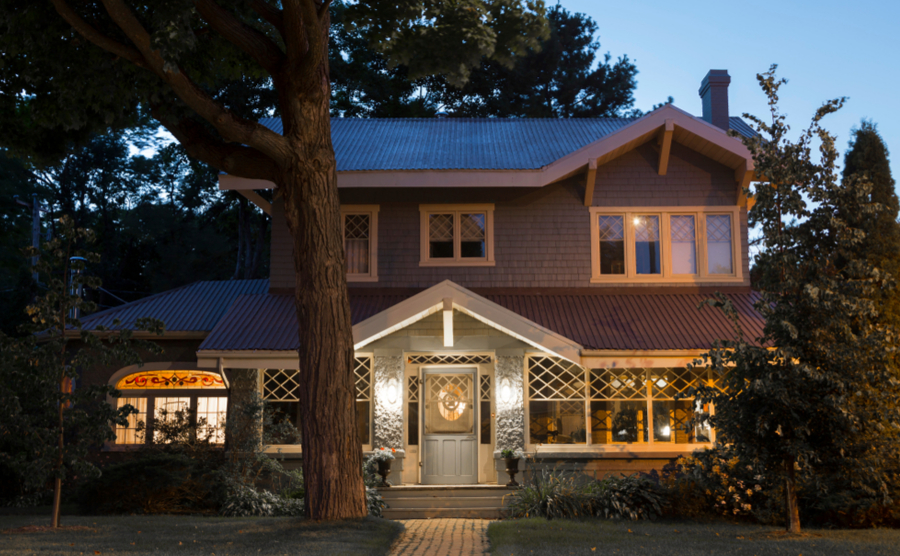
Crafts-style home, Quebec City, Canada
The craftsman
For traditionalists, nothing screams ‘Canada’ more than a craftsman house, a style that reflects the country’s heritage and an old-world charm. Especially prevalent in Vancouver and Canada’s west coast and around the Great Lakes, the style is applied to bungalows as well as two-storey homes. Craftsman homes took hold at the start of the 20th Century, inspired by the Arts and Crafts movement and popular with middle class families seeking a warm, attractive and affordable family home. Characteristics include the use of natural materials, especially wood and stone, low-pitched roofs with a gabled or hip roof for the second-floor windows, a porch or veranda spanning the length of the house or wrapping around it, exterior wooden cladding and double-hung windows.
Mountain chalets
Log cabins in Canada’s mountain and lake resorts, such as Whistler and Tremblant, have come a long way over the years. The ultimate chalets-style retreats are still built from logs and natural stone and look super traditional from the outside, but inside they have all the mod cons. Today’s designs typically maximise light and the surrounding scenery, so the main living spaces are open-plan with floor-to-ceiling windows – so the glorious views can be appreciated all day long!
For more information about buying in Canada,
download our free guide today


